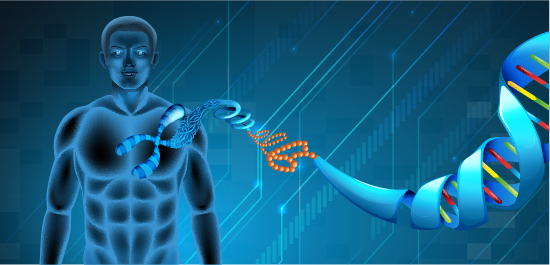
A weekend away with a book of poetry, a mountain biking holiday, or perhaps a daring jewel heist……whatever your idea of a fun weekend is, a well-laid out, precise set of instructions usually help; in short, you need a plan! In the gastrulating mouse embryo, precise epigenomic and transcriptomic instructions dictate the differentiation of pluripotent cells into cells of the three primary germ layers (endoderm, mesoderm, and ectoderm), thereby aiding in the establishment of the vertebrate “body plan”. While we possess a general understanding of the transcriptional parts of this plan at this developmental stage, we still lack knowledge regarding how and when epigenetic alterations dictate the expression or repression of genes and hence cell-fate choice and body plan establishment.
Fully exploring these biological instructions requires multilevel analyses on a vanishingly small number of cells and researchers from the Babraham Institute, EMBL’s European Bioinformatics Institute, the CRUK Cambridge Institute, and the Wellcome-MRC Cambridge Stem Cell Institute led by the dream team of Oliver Stegle, John C. Marioni, and Wolf Reik recently took on this daunting task in gastrulating mouse embryos.
Argelaguet and colleagues employed single-cell nucleosome, methylome, and transcriptome sequencing (scNMT-seq) to profile over one thousand single cells isolated from mouse embryos as they exit the pluripotent state and move through germ-layer specification. To help with linking epigenetic “edicts” to transcriptional profiles and subsequent cell-fate choice, the authors also employed multi-omics factor analysis (MOFA), which integrates gene expression data from RNA-sequencing with regulatory element data from the DNA methylation and chromatin accessibility assays and then performs unsupervised dimensionality reduction to capture global sources of cell-to-cell variability via a small number of inferred factors.
So, what did this well thought out set of experiments tell us regarding the epigenetic instructions that form an integral part of the best-laid “body” plans of mice, and perhaps even men?
- Cells exit from pluripotency during the establishment of a repressive epigenetic landscape, which is driven by a global increase in DNA methylation through a wave of de novo methylation, and a gradual decline in global chromatin accessibility in embryonic and extra-embryonic tissues
- Of the 5,000 genes evaluated, the expression of 125 and 52 genes display a significant correlation with promoter DNA methylation and chromatin accessibility, respectively, and mainly comprise repressed early pluripotency and germ cell markers
- Fascinatingly, only a small number of upregulated genes display epigenetic alterations at promoter sequences, suggesting the involvement of different regulatory elements
- Subsequent characterization of germ-layer epigenomes by employing MOFA suggests that early embryonic cells become epigenetically primed at enhancer regions towards an ectodermal fate as soon as cells exit the pluripotent state, a finding that supports the existence of a ‘default’ differentiation pathway (as observed in many pluripotent stem cells)
- MOFA links increases in gene expression during mesodermal and endoderm commitment to DNA methylation alterations (driven by ten-eleven translocation (TET)-mediated demethylation) and increased chromatin accessibility at lineage-specific enhancers
- These enhancer-associated epigenetic changes drive the formation of mesodermal and endoderm transcriptional profiles that drive cells away from the default ectoderm pathway
Overall, the authors provide evidence for the definition of the germ-layer epigenome during gastrulation by a hierarchical or asymmetric epigenetic model; germ-layer specific epigenetic alterations at enhancer elements provide the instructions for cell-fate decisions, the emergence of the distinct germ layers, and formation of the vertebrate body plan.
Co-first author Stephen J. Clark shares, “Through analysing the timeline of events, we identified that the diversification of the three gastrulation layers was mainly driven by epigenetic events affecting germ layer specific enhancers. We found that the epigenome of the ectoderm layer was established much earlier in development than the other two, even though all three cell types arise at a similar time.”
Co-senior author Wolf Reik continues, “Our findings develop our understanding of the role of the epigenome in defining cell fate commitments at different stages of development, with important implications for stem cell biology and medicine. It is very enjoyable to see how the multidisciplinary research community that has come together in this project is now sharing the success of their efforts.”
So, what are your big plans for today? If you have space for a little “light” reading alongside your poetry, see Nature, December 2019, for how epigenetic alterations at enhancers form part of the best-laid body plan of mice, and perhaps men!




